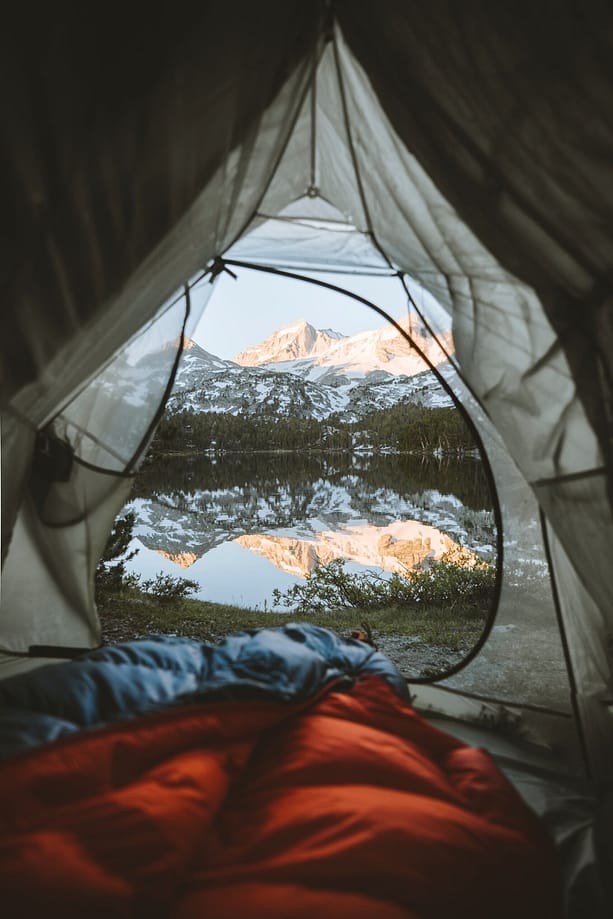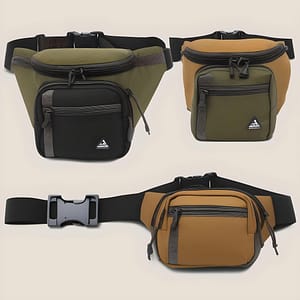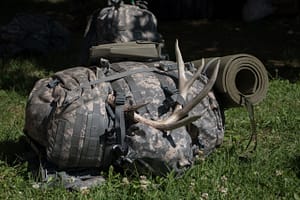Hey there fellow adventurers! If you’re anything like me, camping is a year-round passion. But let’s face it, staying cozy inside a tent during cold weather can be a challenge. That’s why I’ve put together this ultimate guide on heating your tent for year-round adventures. From heaters to insulation tips, we’ve got you covered. So grab a hot drink, sit back, and get ready to make your camping trips warmer and more comfortable than ever before!
How can you keep a tent warm in colder climates?
1. Insulation is Key:
Before we jump into specific heating methods, let’s not forget the importance of insulation. No matter what heating option you choose, proper insulation will make a world of difference. Invest in a high-quality four-season tent designed to withstand cold weather. Look for tents with double-wall construction, thick floors, and well-sealed seams to keep the cold air out and the warmth in.
2. Embrace the Campfire:
Ah, the classic campfire – not only perfect for roasting marshmallows but also for keeping warm. Building a campfire near your tent can provide a natural source of heat. Just make sure to follow all safety precautions and abide by any fire regulations in the area. Remember to use a fire ring or pit and keep a bucket of water nearby to extinguish the flames when you’re done.

3. Wood-burning stoves:
If you’re looking for a more efficient and controlled heating option, consider investing in a wood-burning stove specifically designed for tents. These portable stoves are designed to be safe, lightweight, and easy to set up. They use wood as fuel and can provide a steady source of heating.
Fire safety:
If you’re using a campfire or a wood-burning stove to heat your tent, be extra cautious. Keep flammable items away from the heat source and always have a fire extinguisher or water nearby in case of emergencies. Remember to fully extinguish the fire before going to sleep or leaving the tent.
What kind of additional equipment is needed for heating a tent?
1. Portable Heater: One of the most common ways to heat a tent is by using a portable heater. When choosing a heater, go for one that is safe to use indoors and specifically designed for camping. Look for features like automatic shut-off, adjustable heat settings, and a built-in thermostat. Propane heaters are popular choices as they provide efficient heating, but make sure to follow safety precautions and never leave the heater unattended.
2. Insulated Sleeping Gear: Don’t forget to insulate yourself! Investing in good sleeping gear can make a huge difference in your comfort level during those chilly camping nights. Here are a few tips on how to choose and use insulated sleeping gear:
A. Sleeping Pad: A good sleeping pad is essential for insulation and comfort. Look for a pad with an insulation rating, also known as an R-value. The higher the R-value, the better the insulation. For colder climates, aim for a sleeping pad with an R-value of 3 or higher. There are various types of sleeping pads available, such as foam, self-inflating, and air mattresses. Choose one that meets your needs and provides adequate insulation.
B. Sleeping Bag: Your sleeping bag is your cocoon of warmth. Look for a sleeping bag that is designed for cold-weather camping. Sleeping bags are usually labeled with temperature ratings, indicating the lowest temperature at which it can keep you warm. Aim for a bag with a rating lower than the lowest temperature you expect to encounter. Additionally, consider the shape of the bag. Mummy-shaped bags are more efficient at trapping heat than rectangular ones.
C. Layer Up: Even with a quality sleeping pad and bag, layering up can provide extra warmth. Wear thermal or moisture-wicking base layers, socks, and a beanie to retain heat. You can even use heated blankets or makeshift hot water bottles to warm up your sleeping bag before bed.
What temperature should a tent be heated to?
Ideally, you want to heat your tent to a temperature that is comfortable for you to sleep and relax in. Most people find a temperature range between 60 to 70 degrees Fahrenheit (15 to 21 degrees Celsius) to be suitable for a cozy camping experience. However, this may vary depending on individual preferences and external factors like the weather outside.
It’s worth mentioning that heating a tent too much can lead to excessive condensation, which can make the inside of your tent damp and uncomfortable. This can be especially problematic in cold weather, as condensation can freeze and cause additional discomfort. So while it’s important to stay warm, it’s equally important to find a balance and avoid overheating the tent.
Are there any precautions to take when heating a tent?
If you’re planning on heating your tent during those chilly nights in the great outdoors, there are definitely a few precautions you should keep in mind. Safety first, right? So, let’s dive into some important tips to ensure you stay warm and cozy without any mishaps.
1. Ventilation: As stated above, ventilation is important, while it’s essential to keep the cold air out, it’s equally important to ensure proper ventilation inside your tent. Carbon monoxide (CO) buildup from heaters can be dangerous, so make sure your tent has adequate airflow. Crack open a window or use a vent to let fresh air circulate while you stay warm. Also, when using gas for heating a tent, ventilation is necessary. Gas heaters emit carbon monoxide, which can be extremely dangerous if inhaled in high concentrations. Therefore, it is crucial to ensure proper ventilation inside your tent. Make sure you have ample airflow by keeping a window or vent open. Additionally, consider investing in a carbon monoxide detector for added safety.
2. Choose the Right Heater: When it comes to choosing a heater for your tent, be sure to consider safety and efficiency. Electric heaters are generally safer than gas or propane heaters, as they don’t produce any open flames or emit harmful gases. However, if you do opt for a gas or propane heater, make sure it has safety features like automatic shut-off and a tip-over switch. Go for a gas heater specifically designed for use in tents. These heaters are usually equipped with safety features such as low-oxygen sensors which help prevent accidents and minimize risks.
Is it safe to use a gas heater to heat a tent?
Using a gas heater to warm up your tent can indeed be a feasible option, but it’s crucial to prioritize safety above all else. Here are a few things to consider before you decide to bring a gas heater along on your camping adventure:
A. Ventilation: As with other ways of heating a tent, ventilation is necessary for heating a tent using gas too. Gas heaters emit carbon monoxide, which can be extremely dangerous if inhaled in high concentrations. Therefore, it is crucial to ensure proper ventilation inside your tent. Make sure you have ample airflow by keeping a window or vent open. Additionally, consider investing in a carbon monoxide detector for added safety.
B. Placement matters: When using a gas heater, it’s important to position it properly. Ensure that the heater is placed on a stable and level surface, away from any flammable materials. Keep a safe distance between the heater and the tent walls to prevent any accidental fires.
What materials should be used to insulate a tent from the cold?
1. Thermal Blankets: Another simple and effective option is to use thermal blankets. These lightweight and compact blankets are made from reflective materials that help retain body heat and keep you warm throughout the night. Simply place them over your sleeping bag or layer them between your bedding for added insulation.
2. Tent Insulation Kits: If you want a more comprehensive solution, you can invest in tent insulation kits specifically designed to keep the cold out. These kits usually include insulating panels that you attach to the inner walls of your tent, providing an extra layer of insulation.
3. Reflective Tarps: Using reflective tarps on the outside of your tent can also help to keep the cold at bay. These tarps reflect heat back into the tent, preventing it from escaping and keeping the interior warmer. Attach them to the outside of your tent, making sure to leave some space for ventilation.
What are the costs of heating a tent?
Heating a tent can come with different costs depending on the method you choose. Here are some factors to consider:
1. Electric heaters can vary in cost depending on the specific model and features. Generally, electric heaters for tents can range in price from around $20 to $100 or more. Portable electric heaters designed for camping are often more energy-efficient and compact compared to traditional home heaters. However, it’s important to note that using electric heaters in a tent may require access to a power source, such as a generator or electrical hook-up at a campsite. Before purchasing an electric heater, consider the wattage, heating capacity, and safety features to ensure you find the right option for your needs.
2. Propane heaters are another popular option for heating a tent. The cost of propane heaters can vary depending on the size, brand, and features. Generally, you can expect to spend anywhere from $50 to $200 or more for a propane heater suitable for camping. It’s important to keep in mind that the cost of the heater itself is not the only expense. Propane heaters require fuel to operate, and the cost of propane can vary depending on your location and current market prices. Additionally, you may need to purchase propane canisters or tanks separately, which will also add to the overall cost.
Remember, while propane heaters can provide efficient and effective heat, it’s crucial to use them safely. Always follow the manufacturer’s instructions and guidelines, and never leave a propane heater unattended while it’s in use.

3. Wood-Burning Stoves: Wood-burning stoves are a popular and efficient way to heat a tent during those chilly camping nights. But how much does a wood-burning stove cost?
The cost of a wood-burning stove can vary depending on the brand, size, and features. On average, you can expect to pay anywhere from $100 to $500 for a wood-burning stove. Of course, there are also higher-end options that can cost even more.
When considering the cost, it’s important to also factor in the additional expenses. You will need to purchase firewood, which can range from $5 to $20 per bundle, depending on where you buy it. You may also need to invest in a chimney or stovepipe, which can add to the overall cost.
While wood-burning stoves may have a higher upfront cost compared to other heating options, they can be a worthwhile investment. They provide a reliable and efficient source of heat, allowing you to stay warm even in the coldest of temperatures. They also add a touch of traditional charm to your camping setup. If you’re using a wood-burning stove, the cost will mainly depend on the availability and cost of firewood. Gathering firewood can be free if you’re camping in an area where it’s allowed. However, if you need to purchase firewood, the cost will vary depending on the location and the amount needed.
4. Insulation: Investing in insulation materials for your tent can come with an upfront cost. The cost will depend on the type and quality of the insulation materials you choose. However, having a well-insulated tent can significantly reduce the amount of heat needed to keep it warm, potentially saving you money in the long run.
When it comes to insulation materials for tents, the cost can vary depending on the type and quality of the insulation you choose. Here’s a breakdown of potential costs:
1. Reflective Insulation: Reflective insulation is a common choice for tent insulation. It consists of a layer of aluminum foil or reflective material that helps to reflect heat back into the tent. The cost of reflective insulation can range from $10 to $50, depending on the size and brand.
2. Foam Insulation: Foam insulation is another popular option for tent insulation. It comes in the form of foam panels that you can attach to the walls or ceiling of your tent. Foam insulation can cost anywhere from $20 to $100, depending on the size and thickness of the panels.
3. Sleeping Bag Liners: While not traditional insulation materials, sleeping bag liners can help trap heat and keep you warm inside your sleeping bag. They are usually made of lightweight and insulating materials such as fleece or silk. The cost of sleeping bag liners can range from $20 to $100, depending on the brand and material.
4. Thermal Blankets: Thermal blankets are a budget-friendly option for tent insulation. These blankets are made of reflective material and can be placed over your sleeping bag or used as an additional layer inside your tent. The cost of thermal blankets can range from $5 to $20, depending on the size and brand.
Remember, the cost of insulation materials for tents can vary depending on your specific needs.





